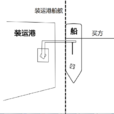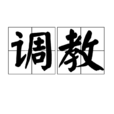population,表示考察对象的全体。又称母体。总体中每个成员称为个体。
基本介绍
- 中文名:人口
- 外文名:population
- 解释:表示考察对象的全体
- 语种:英语
释义
population
表示考察对象的全体。又称母体。总体中每个成员称为个体。例如考察某厂生产的灯泡的使用寿命,该厂生产的所有灯泡为总体,每个灯泡为一个个体。当总体中所含个体总数是有限时,称为有限总体,否则,称为无限总体。在实际中全面了解总体的情况,往往难以办到,如不可能对所有灯泡进行试验,记录每一个灯泡的使用寿命。所以常通过观测部分个体,以获得总体的信息。
用法
population的用法:
一、population常与定冠词the连用,作主语用时,谓语动词常用第三人称单数形式。例如:
The world's population is increasing faster and faster. 全世界的人口增长得越来越快。
At the beginning of the twentieth century, the world\'s population was about 1.7billion. 在二十世纪初,全世界的人口大约是十七亿。
二、当主语是表示\"人口的百分之几、几分之几\"时,谓语动词用複数形式。例如:
About seventy percent of the population in China are farmers. 中国大约有百分之七十的人口是农民。
三、有时population可用作可数名词,其前可用不定冠词。例如:
China has a population of about 1.3 billion. (=There is a population of about 1.3 billion in China.) 中国大约有十三亿人口。
New York is a big city with a population of over 10 million. 纽约是一个有一千多万人口的大城市。
在表示多个地区的人口时,population要用複数形式populations。例如:
Many parts of the world, which once had large populations and produced plenty of crops, have become deserts. 世界上很多地区一度人口众多,种植大量的农作物;现在,这些地区已经变成了沙漠。
四、表示人口的\"多\"或\"少\",不用\"much\"或\"little\",而要用\"large,big\"或\"small\"。例如:
India has a large/big population. 印度人口众多。
Singapore has a small population. 新加坡人口少。
五、询问某国、某地有多少人口时,不用\"How much...?\",而用\"How large...?\";在问具体人口时用\"What...?\"。例如:
-How large is the population of your hometown? 你们家乡有多少人口?
-The population of our hometown is nearly twice as large as that of yours. 我们家乡的人口是你们家乡人口的将近两倍。
-What is the population of Canada? 加拿大的人口有多少?
-The population of Canada is about 29 million. 加拿大的人口大约有二千九百万。
六、population还表示\"某地、某类的动、植物或物品的总数\"。例如:
In India, however, the population of tigers has increased, from 2,000 in 1972 to about 5,000 in 1989. 然而在印度,老虎的总数已从1972年的2,000只增长到了1989年的大约5,000只




